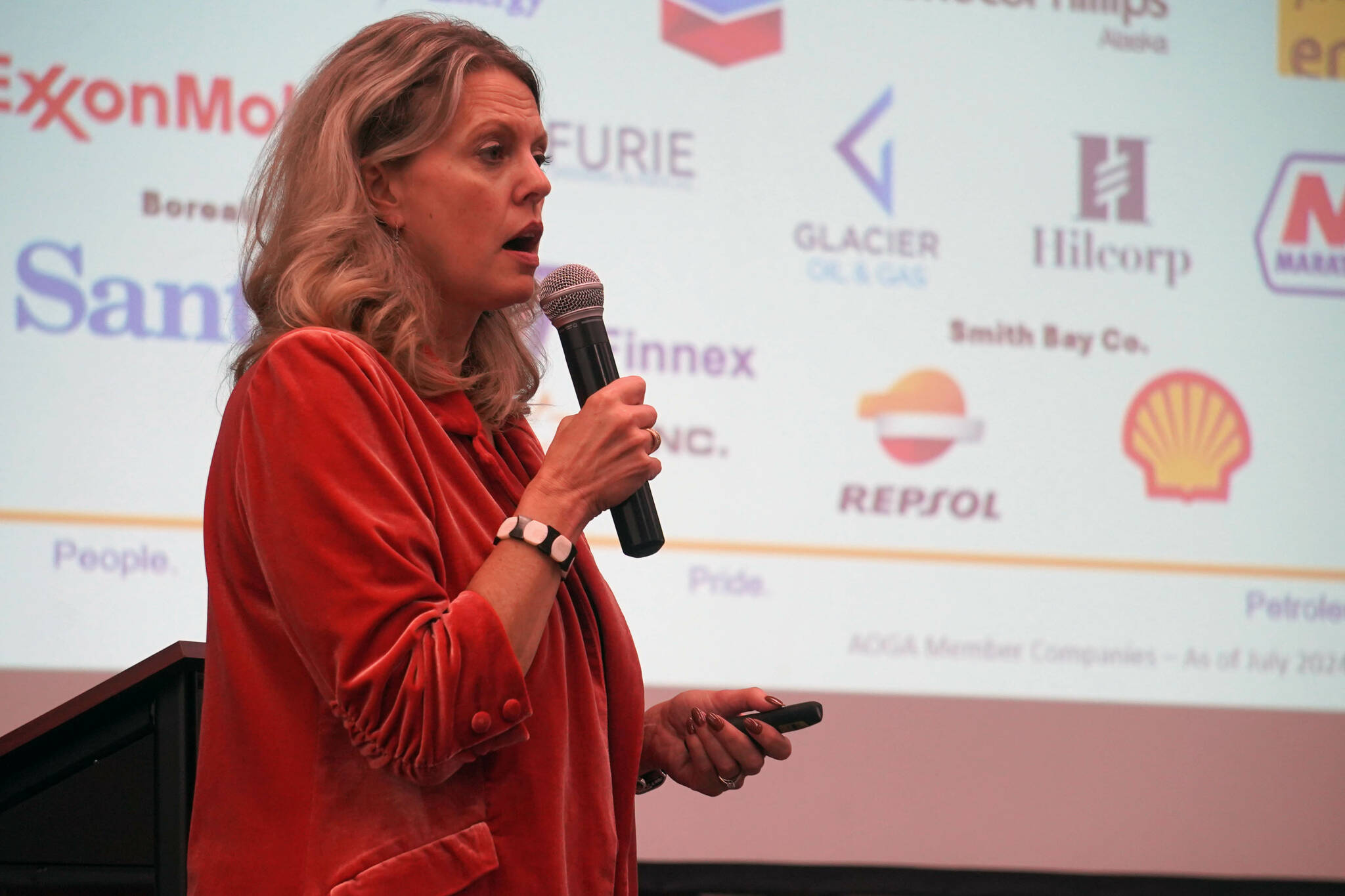Alaska’s oil and gas industry is forecast to produce more than 600,000 barrels a day by the early 2030s. That’s what Alaska Oil and Gas Association President Kara Moriarty told the Kenai and Soldotna chambers of commerce during an “Oil and Gas Update” at a Tuesday, Aug. 6, luncheon.
Moriarty, who said her association’s mission is to “advocate for the long-term viability of the oil and gas industry,” described her industry as a significant economic driver and called for more opportunities for oil and gas production.
Oil and gas producers paid $15 million in Kenai Peninsula Borough property taxes, Moriarty said, and employed 600 borough residents at total wages over $150 million. Those numbers, she said, can be expanded as direct jobs generate contractors or other indirect or induced jobs.
The primary oil and gas corporations, she said, also spend money with “over 1,000 Alaskan businesses.” In 2022, she said, they spend $4.6 billion. The largest share of that total was oil and gas support services, but also includes transportation, construction, retail and other services.
In the coming years, Moriarty said, oil and gas companies are expected to spend on construction and see their production increase significantly. She pointed to developments like the North Slope Willow project, saying that oil and gas companies will spend $14 billion in construction across the next five years.
A projection generated by the Alaska Department of Resources in 2013, Moriarty said, indicated falling production rates from around 520,000 barrels per day in 2014 to 319,000 barrels per day in 2023. Contrary to that estimate, production fell much less dramatically, in 2023 coming in at 488,000 barrels per day.
She credited the difference between projections and reality to a 2013 election where a tax change initiative was defeated — saying further that the Kenai Peninsula was particularly supportive of AOGA’s priorities in that election.
Now, citing a new forecast from the department that stretches forward to 2033, Moriarty said they expect to see production increase as high as 646,000, with increases forecast for every year but 2029.
“We are forecasted to be over 600,000 barrels a day in 2032,” she said. “That will be the highest level we have seen in over 20 years.”
That forecast, she said, is driven by rising need by local utilities, and by successful legislative advocacy by AOGA. Of their priorities for Cook Inlet, Moriarty said, two have been accomplished — “asset based financing” and natural gas storage — but they’re still pursuing royalty relief.
“We’ve got more work to do to make sure that we are creating the atmosphere that we need,” she said. “An attractive investment climate to make sure that both legacy companies and everyone here can be successful.”
The forecast, she said, is developed by the state. She said that many on the AOGA board would consider it “a conservative estimate.”
Other “challenges” that Moriarty described facing oil and gas are the possible listing of king salmon as a endangered species, opposition to oil and gas development by environmentalist groups and federal regulation — specifically blocking drilling in the National Petroleum Reserve.
For more information about the Alaska Oil & Gas Association, visit aoga.org.
Reach reporter Jake Dye at jacob.dye@peninsulaclarion.com.

